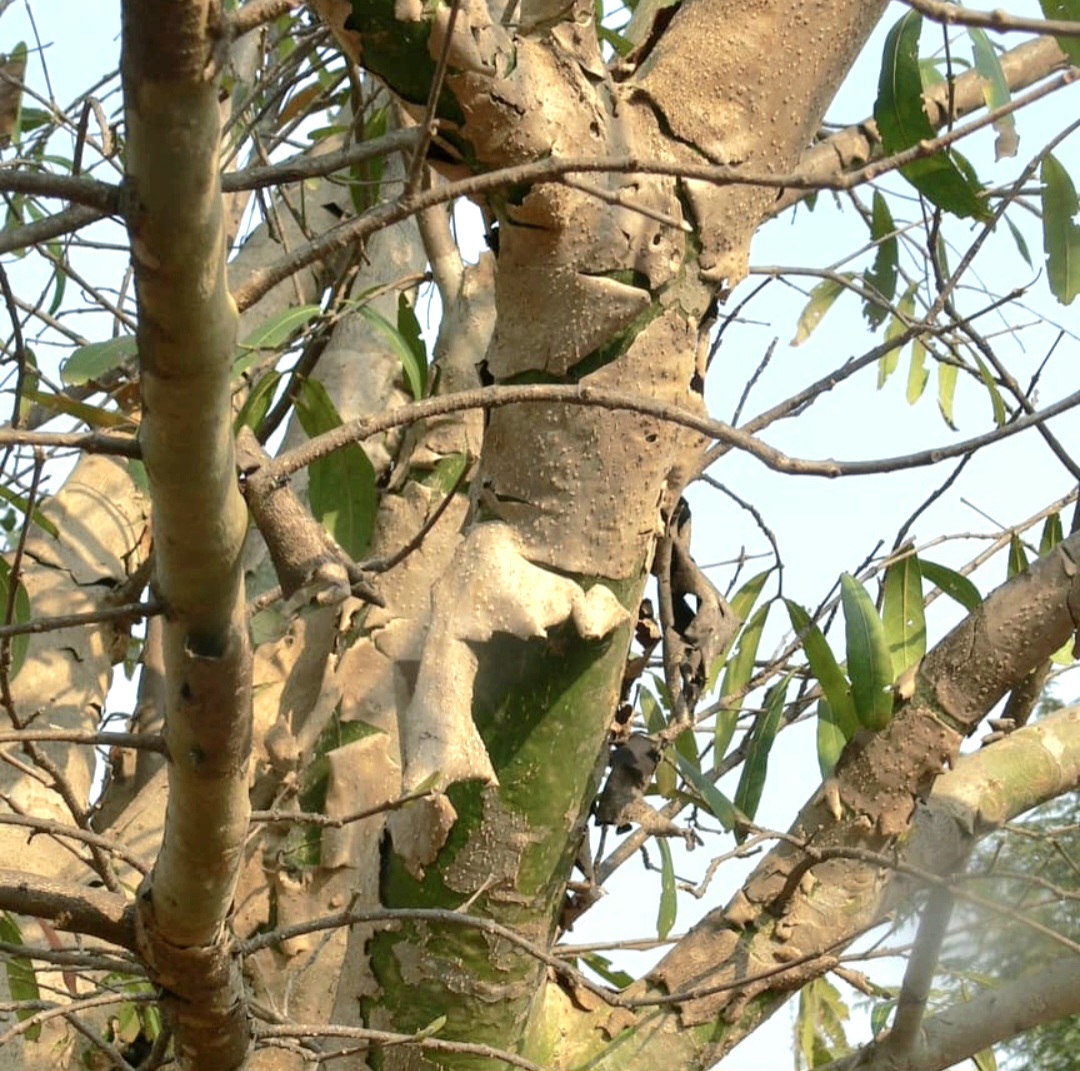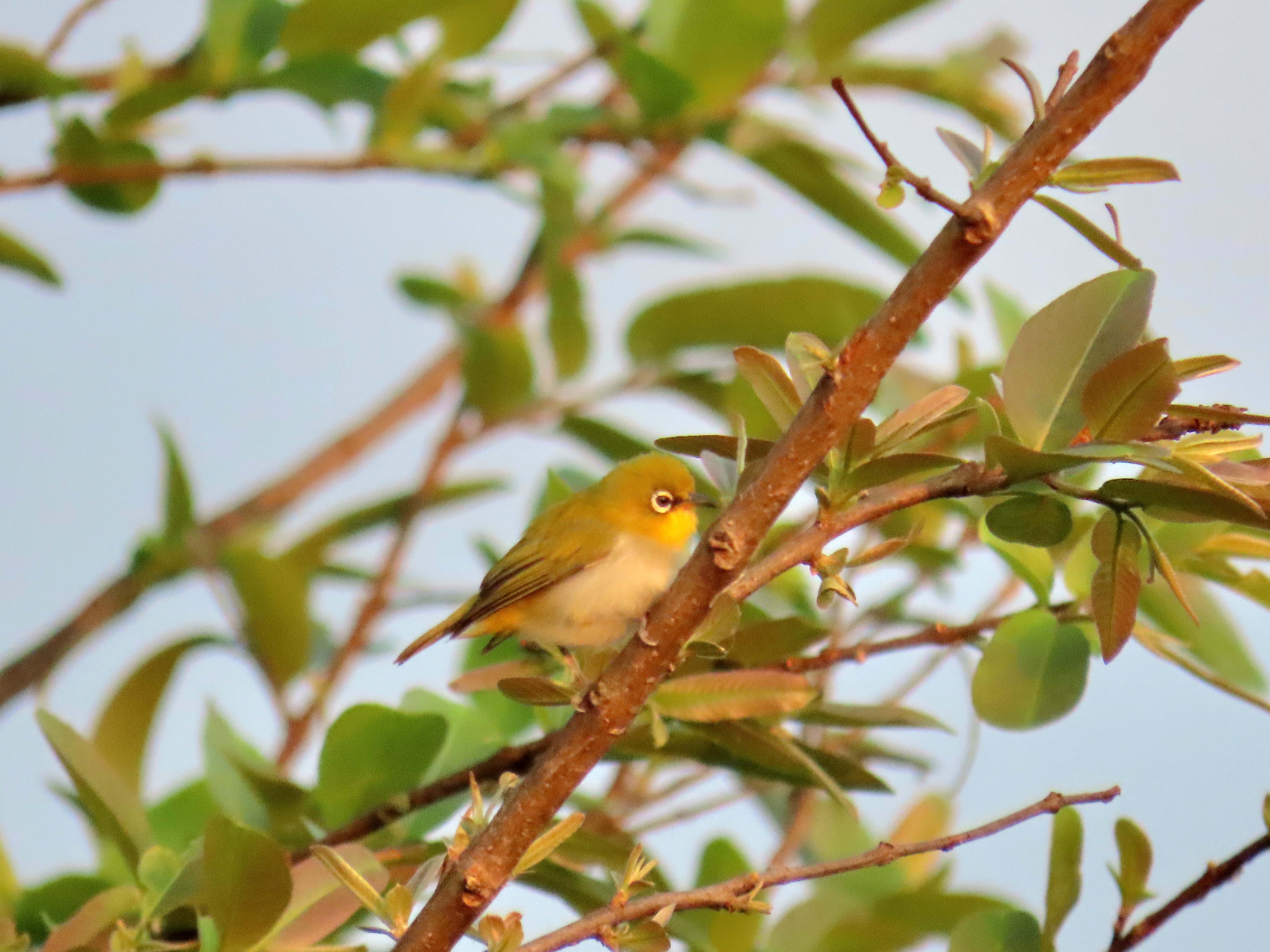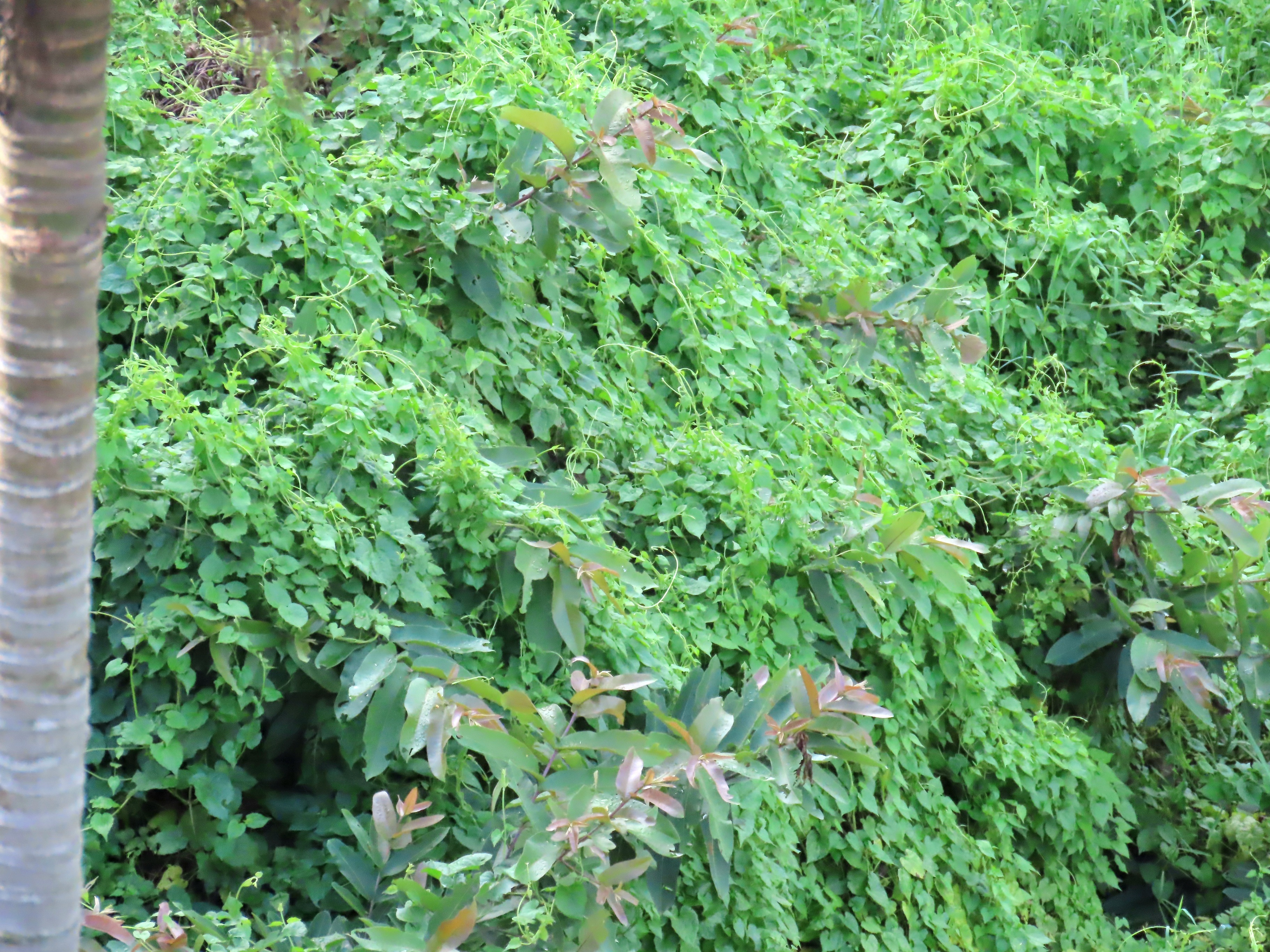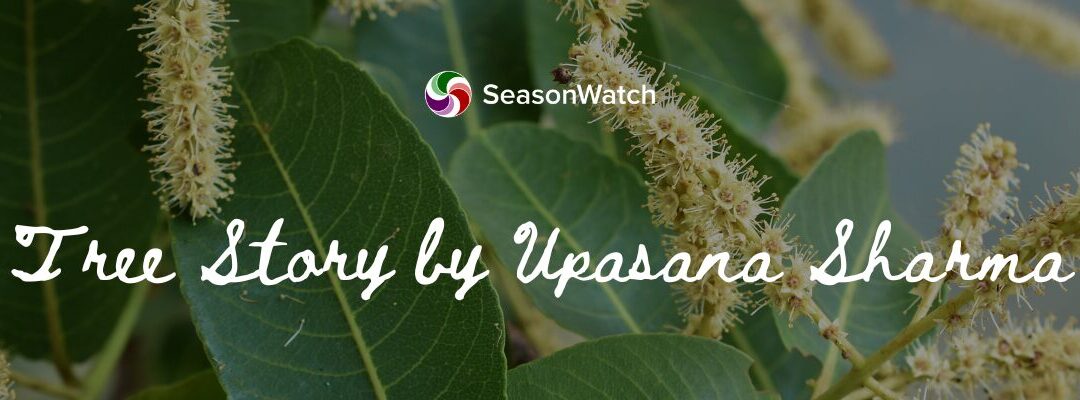There is an emptiness outside my house – not just on the earth where the Arjuna tree once stood but in my life, in my thoughts. I didn’t think I would miss it this much. But I still find myself glancing that way every day, especially in the afternoons, expecting to see sunlight and on full moon night, moonlight filtering through its leaves or a woodpecker pecking at its bark. Now, there is only the sky and silence. The pair of koels doesn’t come near my house anymore. The shade on a summer afternoon is gone. I hadn’t realised how full of life it was until that day, and now I wake up to a much quieter world.
 The arjuna tree before it fell down
The arjuna tree before it fell down
The Arjuna outside our home has been there long before we moved in. According to my mother, the tree was planted by the owner of the property, and it was just a sapling when we came. It has been 26 years since then. Growing up, I didn’t give much thought to the nature around me. Playing under the shades of different trees, picking up fresh seasonal fruits and flowers with friends and cousins, were the only important things I remembered doing. Maybe it was the day when a koel sang from its branches or when I saw some of my relatives peeling the bark of the Arjuna tree, citing it is good for heart ailments, calling it the “Guardian of the Heart”, is when I noticed the tree properly for the first time. The older the tree grew, it supported a complex web of lives providing food, shelter and breeding grounds for species ranging from tiny ants to large mammals like monkeys. It also provided protection to our home from fury winds and direct sunlight, though it caused some trouble for my mother during cleaning the surroundings of our home, especially in the autumn and winter seasons when a lot of its leaves shed and litter the surroundings.
The Arjuna tree became a subject of great interest to me after I got into my post-graduation course. I started noticing the different animals and birds that visited the tree every day and documented it by taking pictures of them. The Arjuna tree attracted a wave of nesting birds ranging from Mynas to Black-rumped Flameback Woodpeckers. I would watch them, noting their behaviour, feeding time, fledging activities and counting their numbers. As the sun set behind the hills, dozens of birds gathered in the upper crown of the tree, including the Black Drongos, Purple Sunbirds, Indian White-Eyes, Parakeets, Cattle Egrets and so on. From our terrace, binoculars and camera ready, I watched the branches sway and shimmer with avian life. It was a natural cathedral, ringing with the last calls of the day. The tree was a playing ground for the squirrels who used to jump the branch all day and, in the evening, quietly went back to the hollow spaces in the tree trunk. It was also a resting place for the passerby monkeys, different snakes, insects, chameleons, tree frogs feeding on small insects, bats and a water monitor lizard.


Coppersmith Barbet and Indian White-eye foraging on the Arjuna tree
There is a small river in our locality called the Khana River. Sometimes, during heavy monsoon rains, the river floods its adjoining areas, during which the roots of the Arjuna tree remain inside water for a few days. After the flood water subsides, everything goes back to normal again. Two monsoons ago, the river again swelled with fury and flooded our surrounding areas for many days. A few days later, one morning, we woke up to find the Arjuna tree awkwardly leaning halfway towards the ground, half of its branches dipped inside the muddy water and half of its roots were exposed. Slowly, the tree started to lean dangerously toward the ground every day little by little. The Arjuna tree that wore a crown of white blossoms in spring, in monsoon, its bark darkened like wet slate, provided shade during summers and in winter, the leaves thinned and let sunlight warm the surrounding area of our home, finally fell down. We all thought this time, it’s over. But nature had other plans. Though the tree fell completely, a few of its roots still held tight to the soil. Months passed, and the tree was still alive. Birds came back, squirrels again made the tree trunk their home, and now the tree is covered partially by wild mushrooms and other native climbing plants, still fighting for its survival. The Arjuna tree taught me a very important lesson, which I would love to share with everyone: survival doesn’t always look graceful and easy. Sometimes, it’s a crooked miracle. So, we should never give up and always keep trying harder.

The Arjuna tree, after it fell completely, now partially covered by other plants
All photos by Upasana Sharma
About the author: Upasana Sharma has completed her Post-Graduation in Wildlife Science from Gauhati University, Assam.





